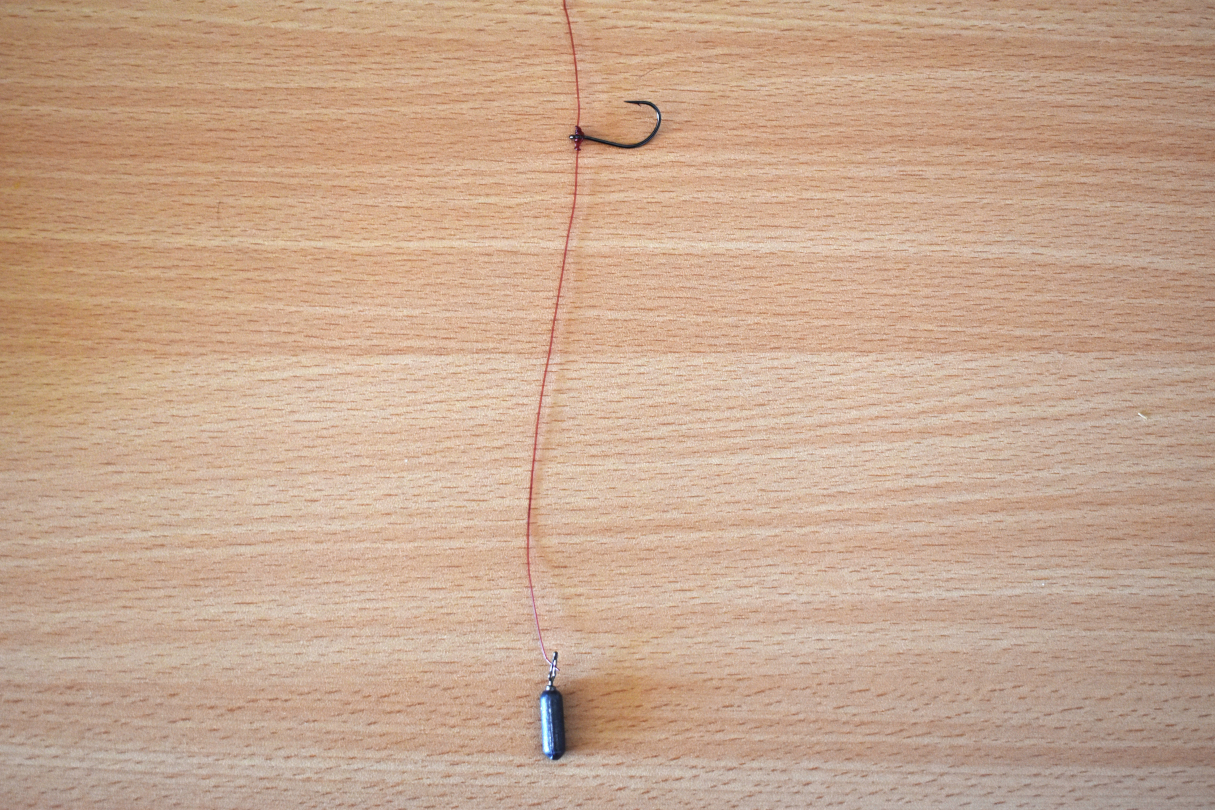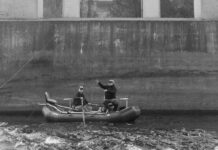The drop shot rig has bailed out many a bass angler. You can fish it any time. But it really earns its keep when you’re fishing vertically or targeting hard-to-catch bass that are heavily pressured, hiding down deep, or extra wary in clear water. I wish I would have tried it much earlier, especially on those dog days when the skunk’s still on or I’m in a slump with my favorite largemouth, smallmouth, and spot tactics.
Like most of the best bass rigs, this finesse presentation consists of a hook, line, sinker, and plastic. But drop-shotting flips the normal order of things with the hook tied above the sinker, or “drop shot.” This upside-down rigging suspends your plastic a bit off the bottom—where bass feed most of the time—and lets it flail in front of their faces. This action often works for fish in neutral or negative feeding moods—which is why every bass angler should learn how to rig a drop shot and how to fish it.
How to tie a drop shot rig
Many serious bass anglers keep a drop-shot rigged up at all times. But many people balk at learning this presentation, perhaps because it appears harder to rig up than a traditional Texas or Carolina rig. But once you learn how to tie a drop-shot knot or Palomar knot, it’s not hard to tie:

- Tie your drop shot hook to your line using a Palomar knot, leaving a long tag line below it. The length of your tag line should equal how many inches or feet you want to suspend your lure above the bottom.
- Thread the long tag end back through the hook eyelet from the top down to secure the hook in an upright position, parallel to the bottom.
- Clip or tie a sinker to the tag line using a simple overhand knot.
- Attach your favorite plastic to your hook, such as a plastic worm or fluke. Depending on the conditions, you can nose hook them, Texas rig them, or wacky rig them.
Why is a drop shot rig effective?
- Drop shots stand out from other bass rigs because:
Keep plastic baits horizontal, making them look more natural. - Make it easier to detect light bites since there’s a direct connection between the rod and hook without the weight in between them.
- Let plastics wiggle and flutter subtly, which attracts fish without spooking them.
- Fish just off the bottom, where bass do most of their feeding.
Plus, this is a system you can fish vertically. If you’ve seen or graphed bass suspended beneath your boat, you can adjust the length of your leader to dangle plastics at the proper depth.
You can fish drop shots for any species of bass. However, I’ve found they’re especially deadly on smallmouth. If you drop one of these cannonballs down in smallie waters, you’ll pick up plenty of bronzebacks when they run off with whatever plastic you suspended a few inches or feet above the weight.
Overall, the rig work best when you know where the bass are. If I’m searching for fish, I’m choosing a Carolina rig to cover more water. If I’m trying to entice belligerent bass to bite, I’m pitching a drop shot in front of their faces or slowly dragging it down a shelf, lake point, or river hole that I know holds fish.
The drop shot is a good finesse rig for deep water, clear water, cold water, and finicky fish that are ignoring other presentations.

How to fish a drop shot rig
Drop shots are simple to fish. You can either work them vertically from a boat or slowly drag the weight over the bottom.
A good rule of thumb for drop-shotting is to move the bait—not the weight.
Once the drop shot settles on the bottom, let your plastic hover above it. Just leave it alone, and let it do its thing. If that doesn’t coax a bite, subtly shake your rod tip with a slight bow in your line to wiggle your plastic without lifting the drop shot off the bottom.
Fish often hit shortly after the drop-shot weight touches bottom. Sometimes, shaking the rod tip adds just enough jiggle to draw bass’ attention.
You can sometimes lift the drop shot off the bottom to repeat this pattern. Or, drag the weight a couple of feet and then pause for the plastic’s natural action to attract fish again.
Bites generally feel like a small tick, or you’ll notice the line going slack or feeling heavy. This system calls for an easy-going hook set. Reel down until you feel the fish’s weight and lift the rod tip to set the hook.
Drawbacks of the drop shot rig
This is a finesse rig for sitting on reluctant fish—not a search bait or power fishing rig. So it’s not a stellar pick if you need to cover a lot of water, prefer burning your baits or twitching them aggressively, or love to ram home hook sets.
Sure, you can fish drop shots from shore. But this is a better boat presentation than a bank presentation, especially if you’re fishing them vertically.
Finally, drop shots lead to line twist and can get hung up in heavy cover. Texas-rigging your plastic above a drop-shot weight can get you through some weed beds, but you’re better off throwing other rigs, such as Texas rigs, in snarls of weeds and trees.

Rigging recommendations
Likewise, this system favors lighter spinning set ups over baitcasters. Most anglers drop shot with a medium-light spinning rod—maybe a medium if you’re fishing heavier and deeper. Line-wise, keep it light with either a 6-pound test fluorocarbon or (ideally) a braided line with a fluorocarbon leader.
You can fish almost any plastic above a drop shot—from flat-tail worms to shad-shape worms, straight-tail worms, flukes, craws, creature baits, and Senkos. Generally speaking, those with thinner tails make the best wiggle baits for this presentation. Most of the time, you should mimic whatever forage bass prefer in the water you’re fishing.
The size and style of your plastic should influence your choice of hooks. However, size 1 to 1/0 circle hooks, octopus hooks, and open hooks are the most popular options for drop shot rigs. Most people prefer pencil weights—my stash ranges from 1/16 ounce to ½ ounce sinkers to cover different depths.
Here are some more specific rigging recommendations:
- Straight-tail Robo worms are standbys: 4-inch for smallmouth and 6-8 inch for largemouth
- Choose shad-shape worms or 3-4-inch minnow profile plastics when baitfish are bass’ forage of choice
- Nose-hook your plastics for the most natural action
- Leave a longer leader to wacky-rig a Senko or stick worm for more action.
- Texas-rig your worm above the drop shot in thicker weed beds to reduce snagging
- Dial down your drag to protect your lighter line and lite wire drop-shot hooks.
Drop shot rigs have won heaps of bass tournaments and salvaged several fishing trips when the conditions pretty much sucked. If you haven’t tried it, it’s worth adding it to your bass angling skill set. This finesse approach doesn’t take much tackle, targets fish just off the bottom, and ups your odds at boating bass when they’re turned off, spooked, or wary in clear water.








